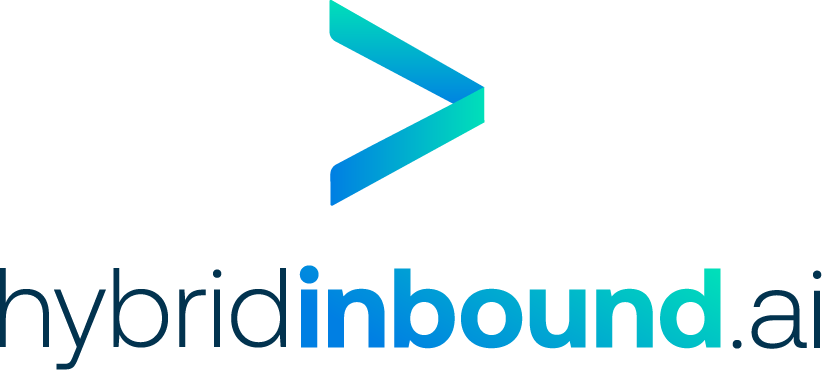In the digital world, mastering SEO inbound marketing is essential for businesses that want to attract and keep customers. This approach focuses on drawing in potential clients through valuable content and effective strategies. By understanding SEO inbound marketing, businesses can improve their online presence, connect with their audience, and ultimately drive growth. This article will explore key strategies and insights to help you succeed in this ever-changing landscape.
Key Takeaways
- SEO inbound marketing helps businesses connect with customers by providing useful content.
- Understanding your audience is crucial for creating engaging material that meets their needs.
- Regularly measuring and adjusting your strategies ensures ongoing success in your marketing efforts.
Understanding SEO Inbound Marketing
What Is SEO Inbound Marketing?
So, what’s the deal with SEO inbound marketing? Well, it’s all about pulling customers in instead of pushing your message out. Think of it as a friendly invitation rather than a loud shout. Inbound marketing, also called “pull marketing,” attracts customers to your business by offering valuable content and resources. This means creating stuff that people actually want to read, watch, or listen to.
Why It Matters in the Digital Landscape
In a world where everyone is online, SEO inbound marketing is super important. It helps businesses stand out in a crowded market. When you provide useful content, you build trust with your audience. They start to see you as a go-to source for information, which can lead to more sales down the line.
Key Components of a Successful Strategy
To nail your SEO inbound marketing strategy, you need to focus on a few key things:
- Know Your Audience: Understand who you’re talking to and what they care about.
- Create Quality Content: Make sure your content is valuable and engaging.
- Optimize for Search Engines: Use SEO best practices to help people find your content easily.
Remember, it’s not just about attracting customers; it’s about keeping them coming back for more!
Crafting Your SEO Inbound Marketing Strategy
Identifying Your Target Audience
First things first, you need to know who you’re talking to. Understanding your target audience is key to creating content that resonates. Here’s how to get started:
- Research demographics: Look into age, gender, location, and interests.
- Create buyer personas: Build profiles of your ideal customers to guide your content.
- Engage with your audience: Use social media to ask questions and gather feedback.
Creating Valuable Content That Attracts
Once you know your audience, it’s time to create content that grabs their attention. Think about what they want to read or watch. Here are some tips:
- Focus on quality: Make sure your content is informative and engaging.
- Use different formats: Mix it up with blogs, videos, infographics, and podcasts.
- Solve problems: Address common questions or challenges your audience faces.
Utilizing SEO Best Practices
Now that you have great content, you need to make sure people can find it. This is where SEO comes in. Here’s a quick checklist:
- Keyword research: Find out what terms your audience is searching for and use them in your content.
- Optimize on-page elements: Use keywords in titles, headings, and meta descriptions.
- Build backlinks: Get other reputable sites to link to your content, boosting your credibility.
Remember, crafting a successful SEO inbound marketing strategy is all about connecting with your audience and providing them with the value they seek. By focusing on these key areas, you’ll be well on your way to mastering your inbound marketing efforts!
Measuring Success in SEO Inbound Marketing
Key Metrics to Track
When it comes to figuring out how well your SEO inbound marketing is doing, you need to keep an eye on some essential metrics for measuring SEO performance. Here are a few to consider:
- Organic Traffic: This shows how many visitors come to your site from search engines.
- Click-Through Rate (CTR): This tells you the percentage of people who click on your link after seeing it in search results.
- Bounce Rate: This indicates how many visitors leave your site after viewing just one page.
Tools for Monitoring Performance
To make sense of all this data, you’ll want to use some handy tools. Here are a few that can help:
- Google Analytics: This is a must-have for tracking website performance and user behavior.
- SEMrush: Great for checking your SEO rankings and keyword performance.
- Ahrefs: Useful for analyzing backlinks and competitor strategies.
Adjusting Strategies Based on Data
Once you have your data, it’s time to make some changes. Here’s how to do it:
- Review your metrics regularly: Set a schedule to check your performance.
- Identify trends: Look for patterns in your data that can guide your decisions.
- Make adjustments: Don’t be afraid to tweak your strategy based on what the data tells you.
Remember, measuring success isn’t just about numbers. It’s about understanding what those numbers mean and using that knowledge to improve your strategies!
The Future of SEO Inbound Marketing
As we look ahead, the landscape of SEO inbound marketing is changing rapidly. The way people search for information is evolving, and businesses need to adapt to stay relevant. Here’s what to keep an eye on:
How Will SEO Evolve?
- Voice Search: With smart speakers and voice assistants on the rise, optimizing for voice search is becoming essential. Think about how people phrase questions when they speak versus when they type.
- AI and Machine Learning: These technologies are shaping how search engines understand content. They’re getting better at interpreting user intent, so creating high-quality, relevant content is more important than ever.
- User Experience (UX): Search engines are prioritizing sites that offer a great user experience. This means fast loading times, mobile-friendly designs, and easy navigation.
What Should Businesses Focus On?
- Content Quality: Focus on creating valuable content that answers your audience’s questions. This will help you stand out in a crowded market.
- Local SEO: As more people search for services nearby, optimizing for local search can give you a competitive edge.
- Social Media Integration: Engaging with your audience on social media can drive traffic to your site and improve your SEO.
Key Takeaways
- The future of SEO is all about adapting to change. Businesses that stay ahead of trends will thrive.
- Embrace new technologies and focus on providing value to your audience.
- Remember, it’s not just about getting traffic; it’s about converting that traffic into loyal customers.
The future of SEO is bright for those willing to innovate and adapt. Stay curious and keep learning!
As we look ahead, the world of SEO inbound marketing is evolving rapidly. To stay ahead, it’s crucial to adopt a hybrid strategy that combines the best of both traditional and digital marketing. This approach not only boosts your website traffic but also helps you connect with more potential clients. Ready to transform your marketing game? Visit our website today to learn more!
Wrapping It Up: Your Journey to Inbound Marketing Success
So, there you have it! Mastering inbound marketing is all about understanding your audience and giving them what they need. By creating helpful content and using smart strategies like SEO and social media, you can attract and keep customers. Remember, it’s not just about getting people to your site; it’s about making them feel valued and turning them into loyal fans. Keep testing and improving your methods, and don’t be afraid to try new things. With patience and effort, you’ll see your business grow in the digital world!
Frequently Asked Questions
What is SEO Inbound Marketing?
SEO Inbound Marketing is a method that helps attract customers by creating useful content. It focuses on getting people to find your business through search engines, making it easier for them to discover what you offer.
Why is SEO Inbound Marketing important?
This type of marketing is important because it helps businesses connect with customers when they are looking for information. It builds trust and encourages people to choose your products or services over others.
How can I measure the success of my SEO Inbound Marketing efforts?
You can measure success by looking at things like website visits, how long people stay on your site, and how many people make a purchase. There are tools available that can help you track these numbers.






